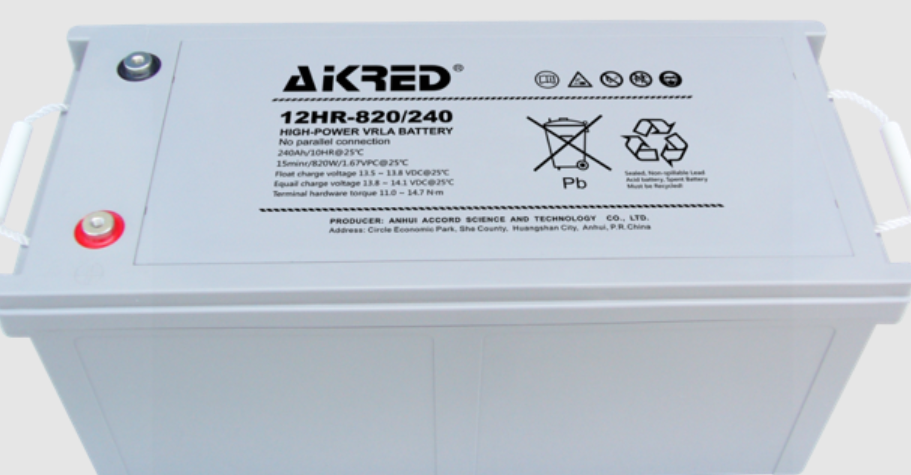A flooded lead-acid battery, also known as a valve-regulated lead-acid battery, is a type of lead-acid battery. In this type of battery, the electrolyte is submerged or immersed between the plates of the battery, which means that the plates are completely immersed in the electrolyte. Unlike traditional open lead-acid batteries, flooded lead-acid batteries have a sealed construction, which means that the inside of the battery is sealed and there is no free-flowing electrolyte. In the industry flooded lead-acid batteries are also referred to as submerged lead-acid batteries which are, in essence, rechargeable batteries.
Flooded lead-acid batteries can be manufactured with a nominal cell voltage of 2V or 12V. The main characteristic of this type of battery is that the electrolyte (usually a sulfuric acid solution) is "flooded" or "submerged" between the plates of the battery.

[Advantages of submerged lead-acid batteries]:
Submerged lead-acid batteries have many advantages, such as higher energy density, lower self-discharge rate, and longer life. self-discharge rate, longer cycle life and better safety. Since they have a sealed structure, they do not leak electrolyte, thus reducing maintenance costs and environmental impact. In addition, they can be used in a variety of environments, including high and low temperatures.
These types of lead-acid batteries are cheaper than AGM batteries and are more reliable because they are not as sensitive as AGM batteries and are not as prone to overcharging as AGM batteries, and are therefore sometimes preferred over AGM batteries versus lead-acid batteries. But despite the many advantages of flooded lead-acid batteries, specific application needs and requirements still need to be considered when selecting a battery type and configuration, such as load characteristics, expected service life, cost and maintenance requirements. In addition, the safe use and maintenance of batteries is very important and relevant safety regulations and operating guidelines need to be followed.
[Disadvantages of Flooded Lead-Acid Batteries]:
Note that these batteries are prone to leakage, and have a certain maintenance cost because of free-flowing liquids inside their casing. This means that they can be damaged if any relevant factors such as hot and cold environmental changes come into play, in addition to the fact that the electrolyte is relatively subject to evaporation, as well as the need to consider how to handle batteries with toxicity.
In terms of their use for batteries, flooded lead-acid batteries are used in a wide variety of applications such as UPS power supplies, telecommunication equipment, data centers, medical equipment, and renewable energy systems. In these applications, they provide reliable power reserves and energy storage solutions. Lead-acid batteries are one type of battery, and other types of rechargeable batteries include nickel-cadmium batteries and lithium-ion batteries, among others. Each type of battery has its own specific nominal voltage; for example, nickel-cadmium batteries have a nominal voltage of 1.2V, while lithium-ion batteries can have a nominal voltage of between 3.3 and 3.7V, depending on the chemistry of the battery.
But we need to pay attention to any battery for the battery life will be affected by many factors, so it is difficult to accurately predict the service life of the battery, flooded lead-acid batteries are also the same, if we want to better prolong the service life of the battery, we should correctly use the battery as well as the maintenance, in order to ensure that our batteries can have a better use of performance and The service life of the battery is also the same for flooded lead-acid batteries.
As technology continues to advance and innovate, the lead-acid battery industry is also pushing forward. For example, new lead-acid batteries may have higher energy density, longer cycle life, and better safety. These technological advancements and innovations are likely to drive the flooded lead acid battery market. In terms of demand the rise of new energy markets, such as the popularity of renewable energy sources such as solar and wind, the demand for lead-acid batteries as an energy storage solution is likely to increase. From the industry as a whole, the flooded lead-acid battery market still has some potential for growth in the future, but it is also facing some challenges and uncertainties. Enterprises need to pay close attention to market dynamics and technology development trends, actively respond to market changes and continue to innovate and improve their competitiveness. At the same time, the government and the community also need to strengthen the regulation and support of the lead-acid battery industry, to promote the industry to a more environmentally friendly and sustainable direction.